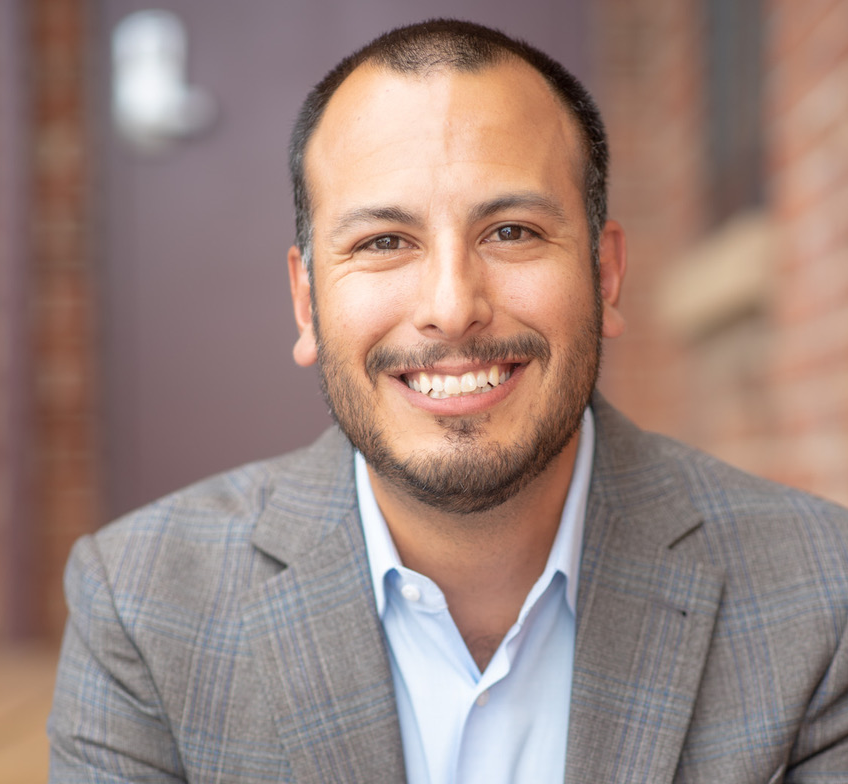While there is power in having deep roots and beliefs in our individual learner-centered practices, it is time we step back and recognize that outside of our chamber is amazing work being done in other learner-centered communities and schools across the country.
Miguel Gonzalez, Director of School, Embark Education
Middle school basketball is amazing to watch. Arms and legs go everywhere as students who are slightly too big for their bodies take to the court. We watch as their aspirations for making “the play” collide with their actual athletic ability and understanding of strategy (and, sometimes, the rules).
A while back, I was supporting my students as they joyfully played against a local school. Although the other team was clearly more talented, my students played with heart. With each trip down the floor, they played as if it was the most important trip of their amateur careers.
In one critical moment, after the opposing team missed a shot, there was a flurry of action as the student athletes competed for the rebound. Two players, both on our team, came down with their hands and arms clenched around the ball. They pushed and pulled, trying to wrestle it away from each other.
The gym loudened with hoots of “You’re on the same team! You’re on the same team!” The noise managed to seep through the adrenalin of one player, and he reluctantly relinquished control of the ball.
The player left holding on, still unaware of what just happened and confused why his supposed opponent let go so freely, dribbled excitedly three or four times and laid the ball up into the basket he was defending. Classic middle school basketball.
The Learner-Centered Movement is Not So Different
What has become deeply ironic about that story is how much it seems to apply to today’s learner-centered education movement. Just like the two teammates who struggled with one another in securing the rebound, I have seen individual learner-centered models and networks of models unknowingly battle one another to secure their identity as something distinct from conventional education.
Unlike the middle school basketball game, we don’t have an opponent. Some might think we’re playing against the conventional education system, but that would infer we’re all playing by the same rules with the same outcomes in mind. We know that simply isn’t the case. In fact, it’s our disagreement with the rules of the current game that has driven us to take on the challenge of inventing something brand new.
I think deep inside we recognize that we spend the vast majority of our lives, and work, inside the echo chambers of our own pedagogies—focused on remaining relevant within our own communities. While there is power in having deep roots and beliefs in our individual learner-centered practices, it is time we step back and recognize that outside of our chamber is amazing work being done in other learner-centered communities and schools across the country.
As leaders in this work, when was the last time we stepped back and refreshed our knowledge on learner-centered principles that live outside our own pedagogical practice? What might we gain from learning about constructivist education? What new understandings about deep learning might we encounter at a Montessori Farm School? Did you even know that is what they term the secondary years of school in Montessori models?
Let’s take that step back together and explore a short and incomplete list of learner-centered pedagogies we are often familiar with by name but often far less familiar with their history or the unique offerings they bring to the movement.
It’s important to note it is possible for learning models to use the pedagogical labels below within a school-centered context. The highlights I point to are strictly from the learner-centered lens.
Project Based Learning (PBL)
The term Project Based Learning, or “learning by doing,” entered the modern educational landscape in the early 20th century thanks to John Dewey. I like to cite PBL Works’ definition when simply describing the PBL philosophy:
Project Based Learning is a teaching method in which students gain knowledge and skills by working for an extended period of time to investigate and respond to an authentic, engaging, and complex question, problem, or challenge.
As active participants in learning, students learning within a PBL environment are at the center of their educational development. They research, dig into simulations, and look at real world issues in order to work toward unique and authentic solutions. PBL strives to make student learning visible throughout the process, rather than at a summative evaluation. In this model, “the project is the unit.”
Expeditionary Learning (EL)
Expeditionary Learning came onto the scene in 1991 when The Harvard Graduate School of Education joined Outward Bound USA to create a new model of learning. Ever since, EL has been tearing down the walls of conventional education and embracing communities and the world as vibrant and valuable learning spaces.
With a focus on character growth and teamwork, EL learning models “engage [students] in work that is challenging, adventurous, and meaningful.” Particularly exciting within advanced EL models is the emphasis on students and adults as learners. Everyone is encouraged to own their learning, while discovering their character within.
Montessori
Dr. Maria Montessori opened her first school—Casa dei Bambini—in 1907 Rome. Her first cohort of learners were considered unteachable, and she was determined to prove everyone wrong. Her guiding goal was straight forward: “to foster the children’s natural desire to learn” and to use their natural curiosities to guide the process.
The Montessori pedagogy is one of the oldest examples of learner-centered models and has been built through the simple observation of how children learn. It’s the polar opposite of forcing a student to fit inside a predetermined box.
When discussing student outcomes, Montessorians often talk about how the “prepared environment” is key to providing a whole-child approach to teaching and learning. The environment is set up for students to build independence in decision making, developing the ability to ask deep, probing questions from an early age. Perhaps most importantly, it proves learner-centered education is for all ages.
Stitching the Movement Together
Each learner-centered pedagogy has enormous overlap with others. If we can recognize and celebrate that fact, we can transform our unique labels and terms from dividing lines into a common thread that stitches all of our work together.
We all carry the same underlying belief that every young person in our communities, regardless of whether or not they attend our learning environment, deserves the opportunity to access a learner-centered pedagogy that fits their unique needs and curiosities.
Step back and reflect upon the deepest reasons you choose to work in education and why you work within the pedagogy you do? I feel certain that, regardless of the pedagogy, there is a core belief that it is good for learners. But, do we really think there is only one right way to provide a good learning experience for young people?
Certainly not. And, as we continue to strive for diversity, equity, and inclusion, we will most certainly need as many pedagogies as possible to support the variety of learners we have in our communities across the country (and world).
Transforming Learning in Denver Thanks to My Learner-Centered Colleagues
After navigating my own professional journey in education, I happened upon the opportunity to take everything I had learned and help launch Embark Education in Denver, Colorado—a learner-centered micro middle school, embedded in two small businesses. As the Director of School, I have been able to lead the advancement of our work, thanks to the collaboration I’ve had with other learner-centered leaders. Their varying pedagogical leanings allow me to see opportunities I would otherwise be completely unaware of.
We embrace cross grade levels and support our students where they are on their continuum of learning, rather than delivering content based upon their birthdate. Some may see the influence of Montessori education in that.
We prioritize real world learning as our school is embedded in two small businesses, and we approach the Denver area and the nature of Colorado as our campus. Some educators can identify hints of Expeditionary Learning within that.
We intertwine experiences and learning when students apply knowledge and skills as they engage with real-world challenges in the businesses. Some teachers may see project-based learning’s impact.
We deeply believe that our work is to support students in discovering a sense of self and design learning to uncover that. What learner-centered pedagogy do you see there? All of them?
I challenge you to recognize in your own work the ways in which your pedagogical thinking weaves through many others. And, just as importantly, acknowledge what is completely unique about your design that others should know about.
The broader your view becomes on all that is possible within learner-centered education, the more opportunities you, your students, your teams, and your community will be able to embrace.
If we can stop fighting over rebounds and recognize we’re all on the same team, inventing and playing the same game, we will be able to live into our ultimate purpose of serving each individual student so that they can live fulfilling lives. That’s the team I want to play on. How about you?

